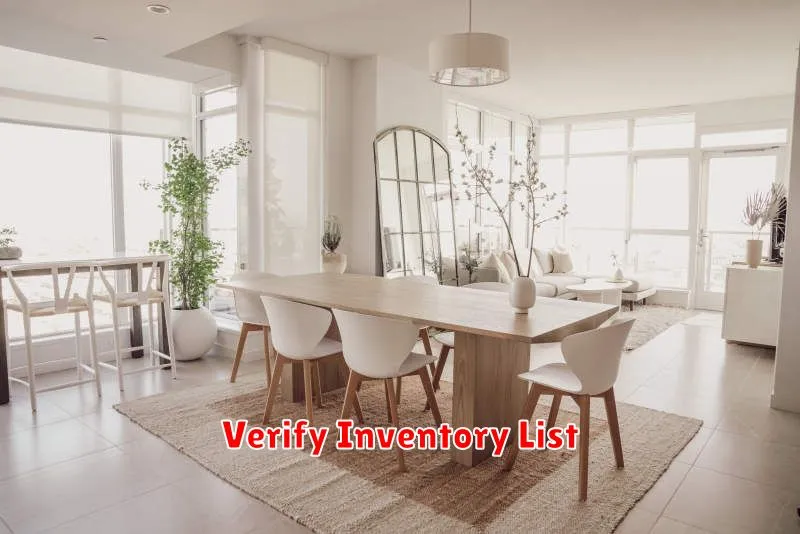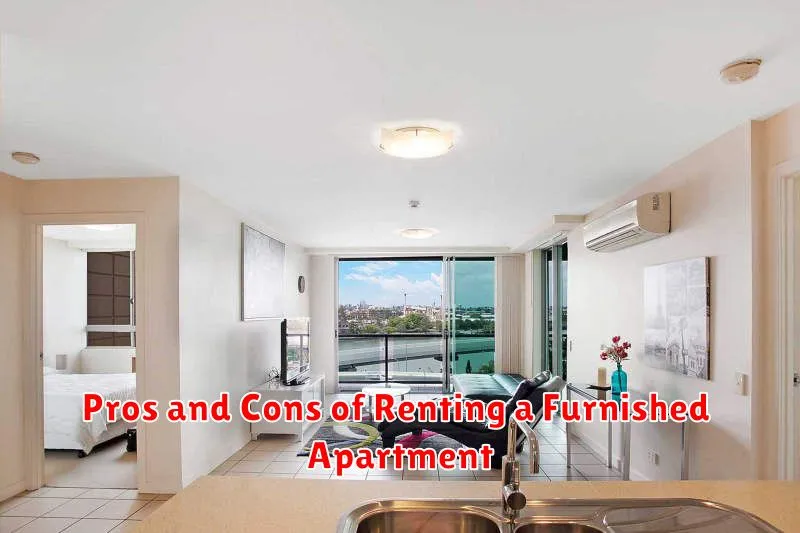Considering a move and weighing the options of renting a furnished apartment versus an unfurnished one? Understanding the pros and cons of furnished apartments is crucial to making an informed decision that aligns with your lifestyle and budget. This article delves into the advantages and disadvantages of furnished apartment rentals, providing a comprehensive overview to help you determine if a furnished apartment is the right choice for you.
From the convenience of move-in ready spaces to potential cost considerations, renting a furnished apartment presents a unique set of factors to consider. Whether you are a student, a professional relocating for work, or seeking a short-term housing solution, this guide will explore the pros and cons to equip you with the knowledge needed to navigate the furnished apartment rental market effectively.
Convenience of Move-In Ready
A primary advantage of furnished apartments is the sheer convenience they offer. Moving becomes significantly simpler. You avoid the cost and hassle of transporting large furniture items. This is especially beneficial for those relocating to a new city or country, students, or individuals seeking short-term accommodations.
Simply arrive with your personal belongings and settle in immediately. This saves time and reduces stress associated with moving. It eliminates the need to shop for furniture, coordinate deliveries, and assemble items, allowing you to focus on other important aspects of your relocation.
Ideal for Short-Term Stays
Furnished apartments present a convenient solution for individuals needing housing for a short period. This is particularly advantageous for those relocating for work, internships, or short-term projects. The availability of essential furnishings eliminates the cost and hassle of purchasing and moving furniture, making it a cost-effective choice for short stays.
This type of accommodation also benefits individuals who are in between homes, whether waiting for a house purchase to finalize or undergoing renovations. The flexibility of a short-term lease provides a comfortable living situation without a long-term commitment.
Higher Rent Costs
One of the most significant drawbacks of furnished apartments is the higher cost. Landlords factor in the expense of purchasing, maintaining, and replacing furniture into the rental price. This translates to a premium you pay for the convenience of a move-in ready space.
You are essentially paying for the use of the landlord’s furniture each month, in addition to the rent for the space itself. This can be a substantial difference, particularly in competitive rental markets. Therefore, it’s crucial to carefully weigh the cost-benefit of the higher rent against the convenience and expense of furnishing an apartment yourself.
Responsibility for Damaged Items
A key aspect of renting a furnished apartment involves understanding responsibility for damaged items. Lease agreements typically outline who is liable for repairs or replacements. Normal wear and tear is generally the landlord’s responsibility. This encompasses expected deterioration from regular use.
However, damage beyond normal wear and tear is usually the tenant’s responsibility. This includes accidental damage, negligence, or intentional harm. Carefully review your lease to understand the specific clauses related to damage liability. Some landlords require renters insurance, which can help cover costs in such situations.
Style May Not Match Preferences
A key drawback of furnished apartments is the potential clash between the provided furnishings and your personal style. Landlords often prioritize durability and affordability over aesthetics, resulting in furniture that may not align with your taste. This can create a living space that feels impersonal or even uninviting.
You may find yourself living with furniture you strongly dislike, affecting your overall enjoyment of the apartment. This lack of control over the aesthetics can be a significant disadvantage for those who value interior design and creating a personalized living environment.
Limited Storage or Rearrangement
Furnished apartments often come with essential furniture pieces, which can be convenient. However, this can also mean limited storage space for your personal belongings. Existing furniture might occupy storage areas like closets and drawers, leaving you with less room for your items.
Furthermore, the fixed arrangement of furniture may not suit your preferences or lifestyle. Rearranging furniture to create a personalized space is usually restricted or not allowed. This lack of flexibility can make the apartment feel less like your own and may compromise your desired comfort and functionality.
Flexible Lease Options
Furnished apartments often offer more flexible lease terms than unfurnished units. This can be a significant advantage for individuals with short-term housing needs or those who value adaptability.
Traditional unfurnished apartments typically require year-long leases. In contrast, furnished apartments may offer short-term leases, such as month-to-month or three-month agreements. This flexibility allows renters to avoid being locked into a long-term commitment.
This can be particularly appealing to individuals in transition, such as students on internships, professionals on temporary assignments, or individuals relocating to a new city and still searching for permanent housing.
What’s Typically Included

Furnished apartments typically include essential furniture such as a bed, sofa, table, and chairs. They also come with basic appliances like a refrigerator, stove, and oven. Often, smaller appliances like a microwave, coffee maker, and toaster are provided as well.
Linens such as sheets, blankets, and towels may also be included, but this varies. Similarly, kitchenware, including pots, pans, dishes, and cutlery, is sometimes provided. The specific items included can differ depending on the rental agreement and the individual property.
Check the Furniture Condition
A critical step in renting a furnished apartment is thoroughly inspecting the existing furniture. Carefully examine each piece for any signs of damage, such as stains, tears, scratches, or broken parts.
Document any existing damage with photos or videos. This documentation will protect you from being held responsible for pre-existing issues when you move out. Pay close attention to the functionality of the furniture. Test drawers, open and close cabinets, and sit on sofas and chairs to ensure they are in good working order.
Verify Inventory List

A furnished apartment comes with existing furniture and appliances. A crucial step before moving in is to verify the inventory list provided by the landlord. This list details all items included in the rental, their condition, and any existing damage.
Carefully inspect each item against the inventory list. Note any discrepancies, such as missing items, or damage not listed. Document these discrepancies with photos and written descriptions. Share your findings with the landlord and ensure they acknowledge the discrepancies in writing. This protects you from potential disputes or charges for pre-existing damage when you move out.

